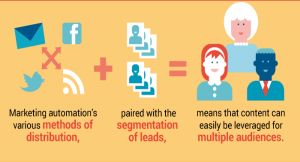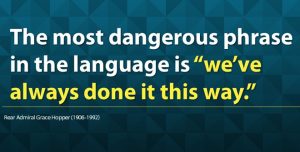With the genesis of Supply Chain Management in the early 1980s, it is no coincidence that this decade also saw the emergence of the personal computer. Where previously a manual and labour-intensive process, this surge of new technology-enabled significant improvements in supply chain planning and execution of the same. These improvements not only identified its importance but also brought attention to the complexity and, indeed, for companies, the overall expense of their operations.
With this company, executives recognised the opportunity to improve the bottom line if they invested in the correct professionals and technology. Fast-forward forty years, the importance of investing in the right people, processes, and systems remains critical indeed paramount to gaining and maintaining competitive advantage. The pandemic of 2020 has caught many companies by surprise, and they are suffering considerable fallout because of inadequacies within their supply chain.
A supply chain will always remain a vast network of products, services, information, and finance. These networks will respond to management in the short term; however, long term, they require exemplary and strong leadership, a strength in leadership that can encourage top performance from all those around them. In turn, leaders cannot be merely managers; they must meet the day-to-day challenges of managing the function whilst at the same time envisaging future demands. The function has already, within the 21st Century undergone significant change; as a critical function, it has advanced almost beyond recognition, companies performing better when they take notice.
That said, and as we reflect on current events, what guidance do we give to supply chain leaders.
There is more than one approach—many styles of leadership can be successful
There is no standard model to supply chain leadership. We increasingly learn that it needs to encompass so much more than the day-to-day, operational 9 to 5. It needs to satisfy not only the organisation’s strategic goals but also those on a professional and personal level.
Build, take care of, and enrich your leaders. Remember, your leaders might not always carry a manager title or position; there are many talents and perspectives to draw from within your organization. As a team, you accomplish your objectives and expectations.
Sharpen decision-making skills
Without a doubt, the need and ability to make critical decisions amid chaos and obstacles is an essential requirement. When opportunities or situations present themselves, a good leader must be prepared and ready. Anticipate, forecast and plan; it is critical to know what to prioritize to avoid or at least minimize risk whilst at the same time making the most accurate and informed decisions to ensure the best possible outcome.
Embrace Technology
A recent report by the Gartner group put digital orchestration as one of the top 3 trends in supply chain. The supply chain has access to copious amounts of data, used effectively, it will accurately spot opportunities, measure progress, and report accomplishments whilst at the same time clearly show the next steps.
How better to enhance the supply chain vision? Leaders of the Top 25 supply chain organizations have shaped cultures based on rapid innovation with specialized skills and technologies. To stay competitive, you, as a leader, must embrace these changes and invest in the right technology and the right people.
Developing exceptional people skills
Ronald Regan once said, “The greatest leader is not necessarily the one who does great things. He is the one who gets people to do great things.” As a supply chain leader, you must have the ability to lead, manage, and influence other people. Managing talent in the supply chain will become increasingly important as organizations move toward a digitally enabled workforce.
As the SCM sphere of influence continues to touch new parts of the organization, leaders will need to learn to collaborate, communicate, and command a large group of stakeholders. So, take the time to learn the core values, strengths, and interests of your partners and stakeholders, integrating these into your own leadership practices.
Be an effective agent for change
Over time, your goal will be to improve the ratio of risk over reward, which is you minimize the risks you face whilst still achieving the rewards that gain you and your function’s success. Every risk you take must have evident and useful rewards; likewise, see the need for change as it arises and be confident of the value that it adds.
To be effective, as an agent for change, of paramount importance, is to know the amount of change, which can be taken at a given time, you should never lose the trust of those you lead through change. Take the time to improve the relationships and confidence you have between your people and processes. Be careful with your timing so as not to lose the loyalty of those you lead. Finally, at all times, be accountable for not only the modifications but also the execution.
Business & Finance Articles on Business 2 Community
(22)






